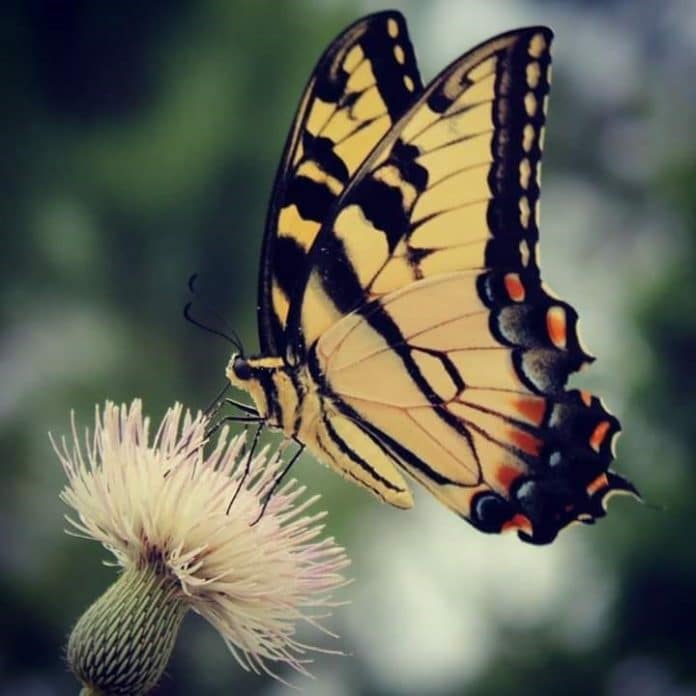Article and Photography by Alice Mary Herden and Florida-Friendly Landscaping™ Program Coordinator Lilly Browning
Being around friends that have a love for nature is a joy. We talk about birds, trees, butterflies, bees, wildflowers and everything in between. What better time to share flowering friendships than during National Wildflower Week.
In 1987 Charles Spencer of the Secular Franciscan Order National Ecology Commission started the week-long event to bring awareness to the beauty and importance of native wildflowers during the first week of May. Wildflower Week was further promoted by The Lady Bird Johnson Wildflower Center. Spencer wanted to honor Edward Piela, a naturalist, and botanist, for his dedication towards his teaching and promoting wildflowers.
Florida alone has thousands of species of wildflowers. You can view them on roadsides, in natural areas, and you can plant native wildflowers at home.
To help you appreciate National Wildflower Week, we have chosen to highlight seven blooming beauties (one for each day of the week) that we found during a wildflower hunt at a local wildlife management area. Some of these flowers are considered weeds by the human population, but don’t tell the pollinators that! Some of these beauties can be tamed and welcomed into your urban landscape. Others are wild by nature and will only grow where they want to grow. That’s why taking a walk in our natural woodlands is so important to catch these gorgeous wildflowers in action.
Let’s begin our week with Sunday and Coral honeysuckle (Lonicera sempervirens). This native plant brings tubular red flowers to your landscape and will attract our ruby-throated hummingbirds, as well as long-tongued bees. Its fruits are enjoyed by cardinals. This woody vining plant is well adapted to an urban landscape and will need a strong trellis or a fence on which to grow. It blooms throughout the year in Central Florida, with its best blooms occurring in the winter months. It prefers dry to moist, well-drained soils and full sun to moderate shade.
Mondays tend to be a bit prickly, so let’s cover a native cactus species Opuntia, spp or Pricklypear. This thorny cactus usually shows up in dry sandy locations. Ranchers are not fans of this succulent because the thorns create a hazard to livestock. In an urban garden, as long as they are not growing in an area where children or pets frequently play or other interactions can be expected, leave these wild ones be! They provide an important food source for gopher tortoises and attract a variety of insect pollinators. In the spring, they bloom with the softest, most attractive yellow flowers. Don’t pick them! The cactus have irritating hairs as well as large thorns. Enjoy the elaborate yellow flowers, as the pollinators surely do. Just like a Monday, this prickly plant can pop up with unexpected allure.
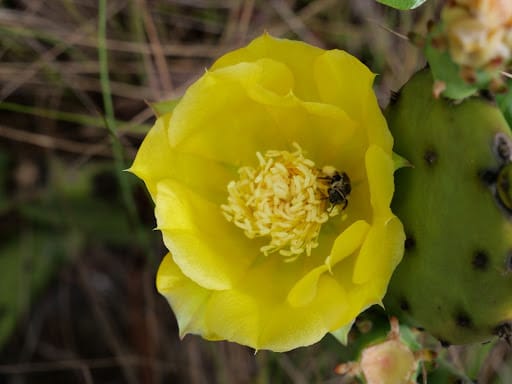
Tuesdays can be rather hectic as well, so we will highlight the Bristle Thistle (Cirsium horridulum) for this busy day. It is sometimes referred to as Horrid Thistle because it is covered in sharp spines. Pay attention to its visual message and don’t touch! But the purple flowers are a photographer’s dream, as many an insect or butterfly linger on the large plate-like flower and seem to pose for a fantastic photo opportunity! This thistle occurs in pinelands and prairies, and can be found along roadsides and disturbed areas. This beautiful pollinator’s delight can occasionally be found at native plant nurseries, but its spiney and sometimes prolific-spreading nature makes this an ideal plant to enjoy on a nature hike.
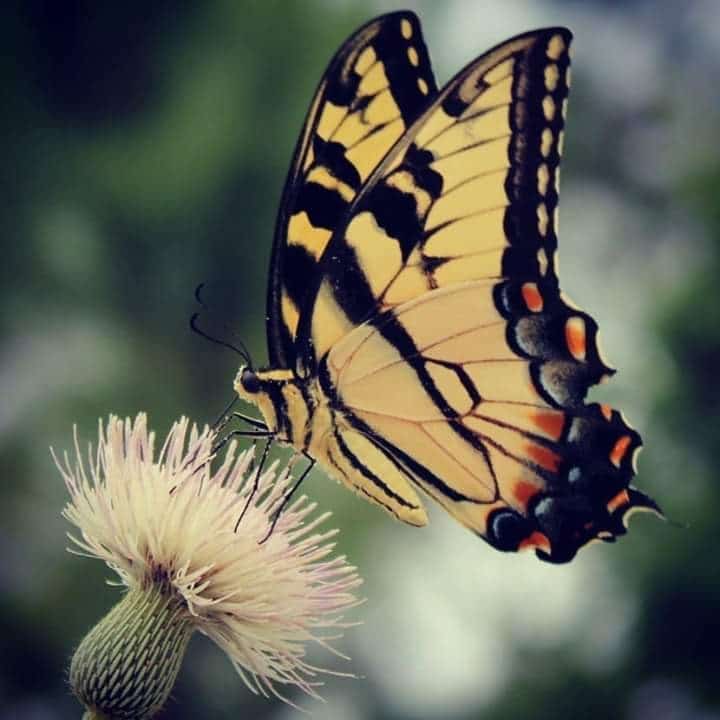
Wednesdays are a good midway point to talk about fun and interesting carnivorous plants! Pink sundew (Drosera capillaris) is a wonderful find on your wildflower hike. It grows in wet areas, often along-side pitcher plants and bladderworts. It is a tiny beauty, and its leaves have dew-like secretions, hence its descriptive name. The leaf blades have tentacle-like glands that secrete a sticky, acidic substance which traps insects. The leaves then fold in, trapping and digesting the insects. It needs constant moisture, and can occasionally be found at native nurseries, but will only do well in a constantly moist location. Finding these fun little insectivorous plants will add a lot of excitement to your wildflower
hunt.
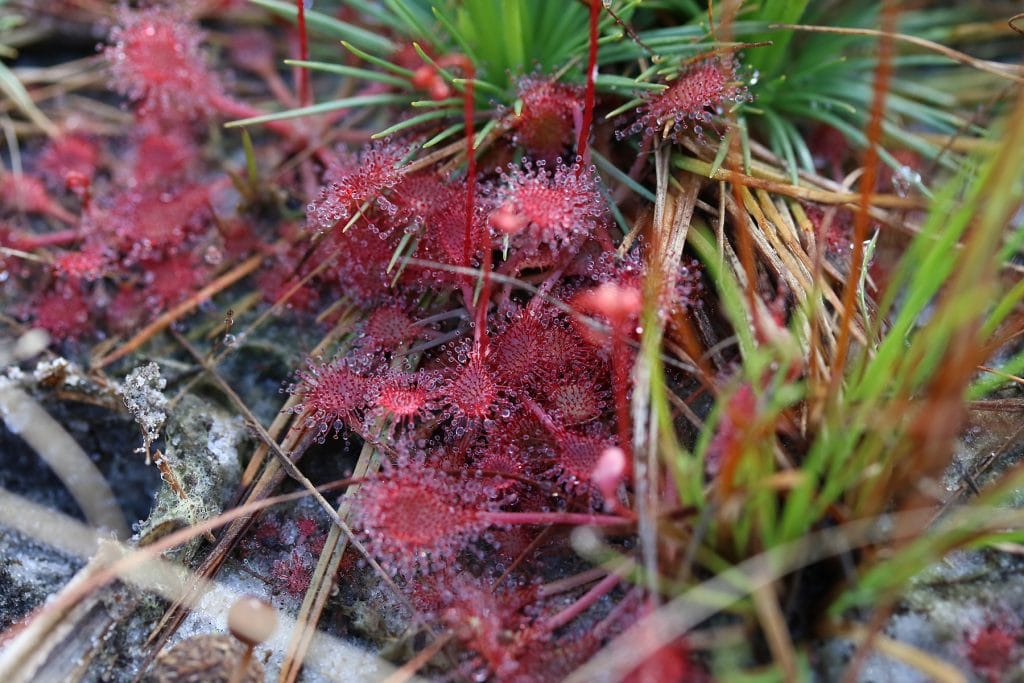
Thursday will have us thinking green with Florida green eyes (Berlandiera subacaulis). These commonly-found flowers are endemic to Florida, they can only be found in our state. They bloom all year long and pop up “like weeds” in dry, sandy areas with a lot of sun. A lot of people may consider these happy, yellow members of the Aster family to be weeds. It seems like when nature hands us a gift of loveliness, we dismiss these pollinating plants as “not good enough.” The butterflies and other pollinators find these blooming beauties more than adequate! Leave them in your yard. Seeds can also be purchased from native plant suppliers.
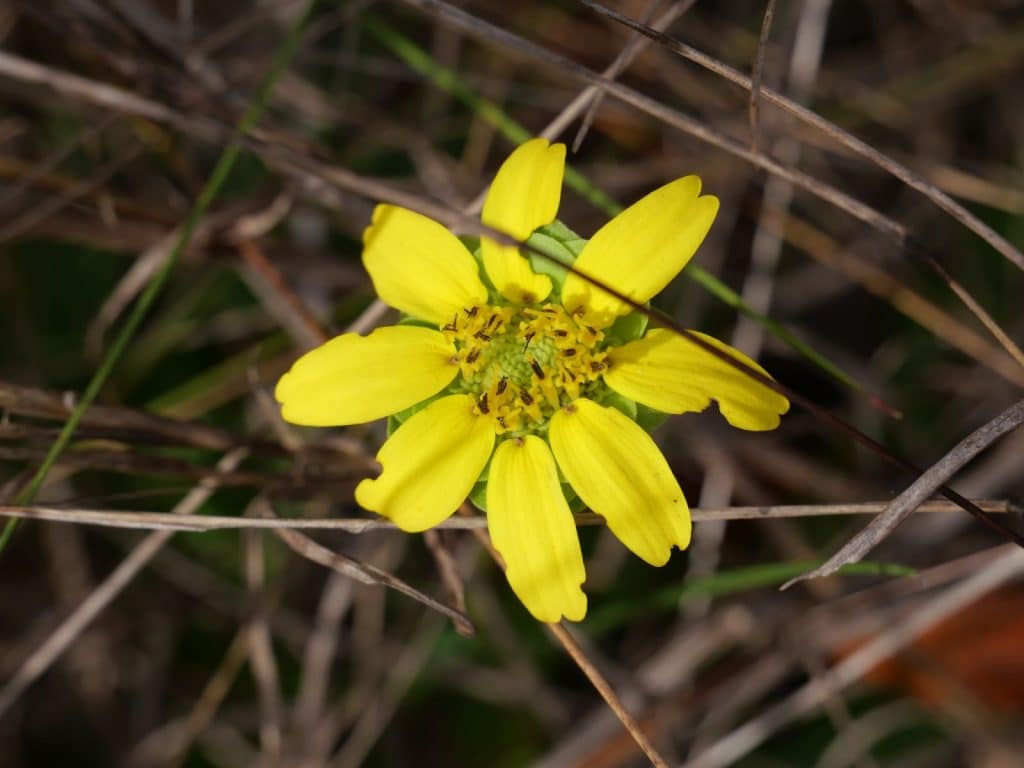
Fridays are for relaxation and happy hour! What better way to celebrate Fridays than with a plant aptly named Powderpuff, Sunshine mimosa (Mimosa strigillosa). This long-lived perennial groundcover can be incorporated easily into an urban landscape, as well as “livin’ la vida loca” in a natural area. Some people find this ground cover a bit aggressive, so proceed with caution in areas where you’d like a lot of ground covered. The pink powderpuff flowers have yellow tips or anthers. It is a member of the sensitive-plant family, so give the leaves a little touch and they will announce closing time! This is a fairly common plant to find among native plant and seed suppliers.
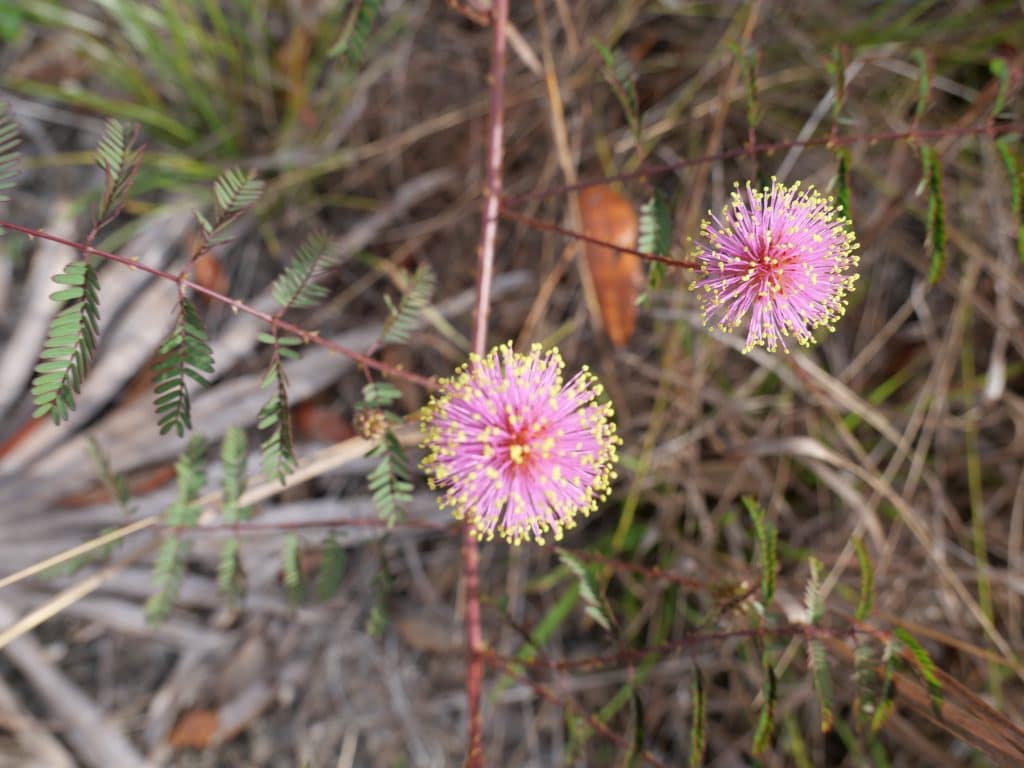
Saturdays are for free flying! This makes us think of monarch butterflies and milkweed! Alice and I ran across three native milkweeds during our wildflower hunt. We saw Asclepias tuberosa, or butterfly weed, just about to burst with blooms. We also came across Asclepias humistrata, or sandhill milkweed, and Asclepias verticillata, or whorled milkweed. Of the three native milkweeds, butterfly weed is the most commercially available. Florida has 21 native milkweeds, but only a few have been successfully ‘tamed’ to survive propagation efforts and resale. Milkweed experts are working hard to make more varieties available. Please seek out native plant sales and seed providers to utilize native milkweeds only. Asclepias curassavica, or tropical milkweed, are most commonly found in big box nurseries, is becoming more and more troublesome and even hazardous to our monarchs.
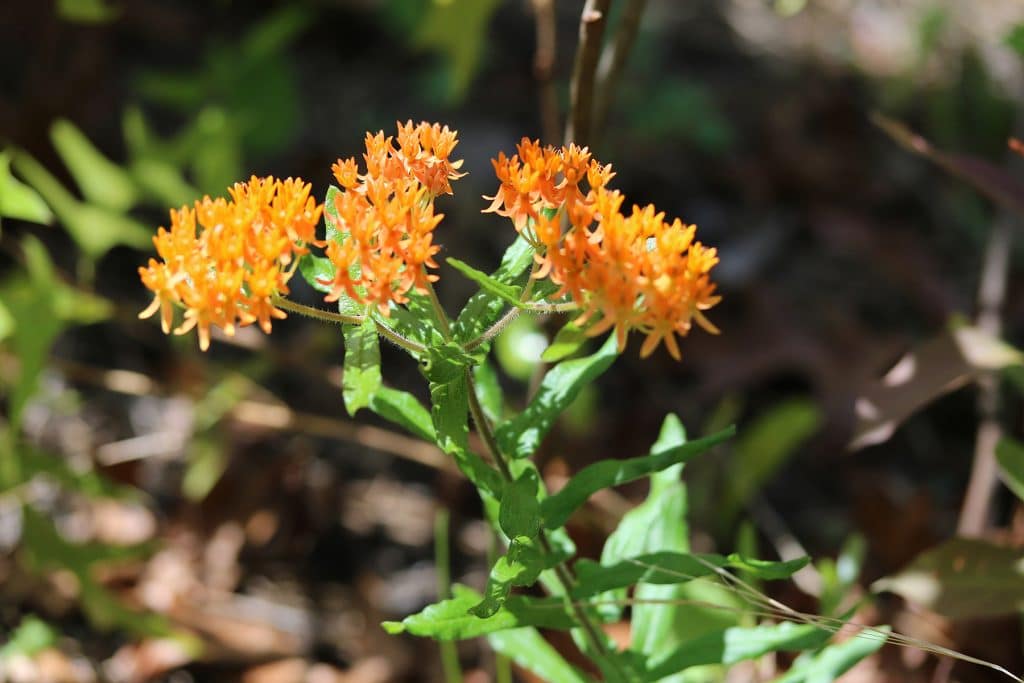
We hope you enjoyed our week of wildflowers. There are so many more that can be enjoyed through nature hikes and many can be incorporated into your Florida-friendly landscape. Eliminate any pesticide use around these wildflowers and their pollinator visitors. Give them the space and the right conditions to flourish! To learn more about Florida’s wildflowers, here are some resources:
https://edis.ifas.ufl.edu/publication/EP138
Hernando County Government YouTube
Florida-Friendly Landscaping Playlist
Bee Specific – Flowers and Plants That Attract Native Bees
Birdscaping
Gopher It! Gardening for Gopher Tortoises
Pulling in the Pollinators
Spring Bloomers
Weeds or Wildflowers – An Introduction to Overlooked Pollinator Plants

